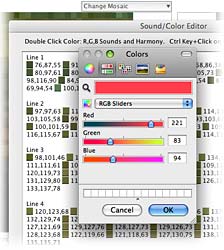

In our experiment, participants were able to match the three digital buttons with their physical counterparts with a success rate of 83%. Finally, we conducted a threealternative forced choice (3AFC) experiment with twenty participants to explore whether the resultant stimulus is distinct and realistic. Then, a button-specific vibrotactile stimulus was generated for each button based on the recorded data. We first recorded and analyzed the force, acceleration, and voltage data from twelve participants interacting with three different physical buttons: latch, toggle, and push buttons. In this study, we focus on creating vibrotactile feedback on a touchscreen that simulates the feeling of physical buttons using piezo actuators attached to it. It is also difficult to relate the limited vibrotactile feedback generated by these motors to different types of physical buttons. CCS CONCEPTS Īlthough mobile phones incorporate low-cost vibration motors to enhance touch-based interactions, it is not possible to generate complex tactile effects on their touchscreens. We discuss how these findings can inform the design of future in-air typing systems.


We report that, compared to constrained typing, unconstrained typing generates shorter (49 mm) and faster (764 mm/s) key-strokes with a high correlation of finger movement and that the HAND strategy group exhibits more dynamic key-strokes. We examine properties of finger kinematics, correlated movement of fingers, interrelation in consecutive key-strokes, and 3D distribution of key-stroke movements. We show that unconstrained typing movements differ substantively from previously observed constrained in-air typing movements and introduce a novel binary categorization of typing strategies: typists who use finger movements alone (FIN-GER) and those who combine finger movement with gross hand movement (HAND). We empirically explore fundamental requirements for achieving VR in-air typing by observing the unconstrained eyes-free in-air typing of touch typists. The results of different experiments reveal the practicality and effectiveness of Auxilio as a head-mounted AMC for empowering the upper limb disabled community. Furthermore, our work also analyzes the usability of Auxilio, featuring the System Usability Scale. Its performance has been juxtaposed with that of a generic optical mouse in different pointing tasks as well as in typing tasks, using a virtual keyboard. Combining commercially available, low-cost motion and infrared sensors, Auxilio solely utilizes head and cheek movements for mouse control. Our work proposes the design and development of a working prototype of a sensor-based wireless head-mounted Assistive Mouse Controller (AMC), Auxilio, facilitating interaction with a computer for people with upper limb disability. Upper limb disability may be caused either due to accidents, neurological disorders, or even birth defects, imposing limitations and restrictions on the interaction with a computer for the concerned individuals using a generic optical mouse.


 0 kommentar(er)
0 kommentar(er)
